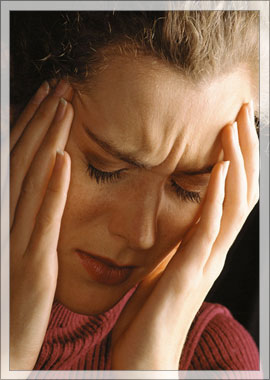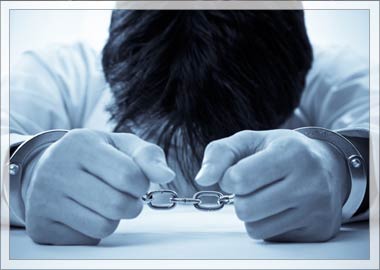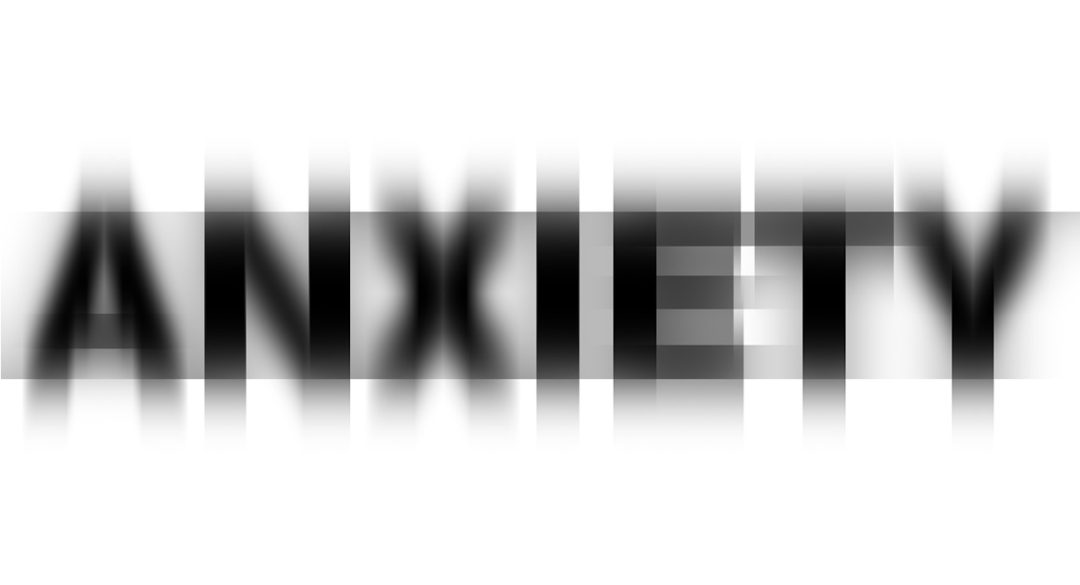Stress is one of the scourges of our age. Most people feel stressed some of the time but many people feel it nearly all of the time. Living in a city is stressful, driving is stressful, working is stressful, not working is stressful and finances are most definitely stressful. This state of constant stress takes it’s toll on our general state of health, sometimes to dangerous levels. We all have different circumstances to deal with and I’m a great believer in getting a bit of help in the form of therapy when needed. There are also many things to do to relieve general life stress. Exercise is hands down my favourite form of stress relief. I honestly believe it’s kept me sane and healthy. Yoga, breathing exercises, taking time out of one’s crazy schedule are all things that can help to relieve stress.
But what happens when stress turns to anxiety or panic? More and more people are suffering from panic attacks including the very young. Anyone who has suffered attacks knows that it’s one of the worst things imaginable.
Charles Linden suffered from chronic anxiety from a very young age. By the time he was in his 20’s he was having 8-10 panic attacks a day. He had it so badly he could no longer work or leave the house. He sought help everywhere but nothing helped. He started to do his own research and ended up curing himself. This process evolved into his own unique method and he has now helped many thousands of people recover from panic attacks, OCD and phobias. Gemma Kidd has talked about how Charles helped her in the press on many occasions.
Charles runs hugely successful retreats and workshops that he says will cure people of panic attacks and many other problems. He also has books and tapes on The Charles Linden method.
He is offering my readers a very special discount on both the workshops and the books. (See bottom of this article for details)
Here he gives us his view on what anxiety actually is and how to get rid of it.
Anxiety disorder is caused by the subconscious mind reacting inappropriately during times of stress and by doing so, ‘learning’ to produce anxiety symptoms even when there is nothing present to be anxious about.
 Anxiety produces symptoms, sensations and thoughts which cause the sufferer to feel as if there is something more wrong with them; most anxiety sufferers believe, for example, that they are suffering with a much more sinister and potentially harmful medical condition and find it difficult to accept the anxiety disorder diagnosis.
Anxiety produces symptoms, sensations and thoughts which cause the sufferer to feel as if there is something more wrong with them; most anxiety sufferers believe, for example, that they are suffering with a much more sinister and potentially harmful medical condition and find it difficult to accept the anxiety disorder diagnosis.
Anxiety is appropriate when and IF there is something present to fear. The anxiety response evolved as an alarm signal, warning and preparing us to respond quickly and appropriately when confronted by real danger… a situation when appropriate anxiety is important to our survival.
Anxiety disorder can be alarming, frustrating and limiting.
Hopefully this anxiety resource will show you that your anxiety is not a mental or physical illness and that you can eliminate your inappropriate anxiety completely without drugs or psychological analysis.
You can and will defeat your anxiety.
Symptoms
The symptoms of anxiety disorders fall into two categories, physical and emotional.
Physical anxiety symptoms
The physical symptoms of anxiety are varied to say the least and vary dramatically between sufferers. Our genetic makeup is a strong factor in determining if and how we develop and anxiety disorder. The anxiety symptoms that you experience could be very drastically different to those experienced by other anxiety sufferers and can also vary massively in intensity and regularity.
Physical anxiety symptoms include:
- panic attacks
- shaking, sweating
- pins and needles
- hyperventilation
- stomach troubles
- dizziness
- racing heart
- dry mouth
- lump in the throat
- difficulty breathing
- muscle cramps
- headaches
- neck pain/migraines
- numbness in face, head back etc.
Whilst anxiety symptoms can feel very threatening indeed, they are not the sign of an underlying physical illness and are, in themselves, completely harmless. They are simply an inappropriate response, fuelled by the anxiety response and perpetuated by your fear.
By undermining the core anxiety which fuels these symptoms, the symptoms, along with the core anxiety, will fade away completely, never to return.
Emotional anxiety symptoms
The emotional symptoms of anxiety can be as frightening as the physical ones. Anxiety produces these symptoms as a by-product of your raised anxiety level.
Emotional anxiety symptoms include:
- Dreaminess
- Tiredness
- Nightmares or bad dreams
- Depersonalization (feeling removed from oneself)
- Derealization (feeling as if in a nightmare or dream)
- Depressive thoughts
- Obsessive Compulsive Disorder, obsessive thoughts or compulsions.
- Thoughts of a sexual or violent nature. Inappropriate thoughts about people you love, sometimes of a violent or sexual nature.
- Increased violence/aggression
- Mood swings
- Inability to love, inability to care for others
- Agoraphobia, social phobia, shyness
- Feeling like you can’t cope
- Disinterest in life
The list goes on and on. Anxiety symptoms vary from person to person, however, all sufferers have one thing in common, that is that given the correct treatment, all of these anxiety symptoms can be reversed and eliminated permanently.
Many clients experience thoughts which they say ‘they would never have thought that before they had anxiety’. These anxiety thoughts can be violent or sexual, they can cause obsessive compulsive disorder (OCD) which manifests itself as constantly checking (that the gas is off, that their hands are clean etc.), this often manifests itself as the performance of rituals.
Anxiety has the force to drive these physical and emotional anxiety states to the extreme, but they can be eliminated.
Treatment
For successful, complete and permanent elimination of an anxiety disorder, it is vital that the sufferer understand that their problem is NOT a mental or physical illness and that they acknowledge that their anxiety is solely responsible for the symptoms they experience. When this is understood, a structured, informative and supportive method of anxiety elimination is carried out.
This form of anxiety elimination is not only completely successful in over 96% of cases, but also very simple to do, producing permanent anxiety elimination.
Anxiety drug treatment is inappropriate; drugs may have a ‘short term’ soporific affect (making them drowsy to eliminate the acute anxiety), but long term, drugs are not the solution to anxiety disorders… at some point the anxiety has to be addressed directly, withdrawing anxiety medications can cause ‘rebound anxiety’ which is probably more distressing than the initial anxiety itself for most sufferers.
Psychology and psychiatry have their place in anxiety management, however, for the most part, they provide only momentary relief for anxiety sufferers during the sessions and between sessions leave the sufferer feeling more alone with their anxiety. The psychological basis of these therapies is flawed in that they force the sufferer to focus on their condition which perpetuates the disorder and could even exacerbate it. Unfortunately implementation and practice of these techniques is also, often, spasmodic and fragmented… not what an anxiety sufferer requires at all.
 So a successful anxiety treatment MUST:
So a successful anxiety treatment MUST:
- Address the core anxiety itself directly
- Provide a supportive and informative base
- Provide unhindered anxiety support
- Be structured and simple
- Be easy to follow and ‘unthreatening’ to read
- Be immediately successful
- Produce permanent results where the anxiety sufferer can return to normal life without anxiety and never be plagued by it again
- Give the anxiety sufferer every resource they will need
Anxiety elimination is simple IF the sufferer has the infrastructure and support required.
Who suffers with anxiety?
Anxiety is pretty indiscriminate; however, some scientists do say that genetic factors can predispose a person to developing anxiety. We do not subscribe entirely to this conclusion. Anxiety disorder is a behavioural condition which is activated by repeating a cycle of anxiety which causes it to become instinctual. Exposure to other anxiety sufferers does have an effect on the formation of anxiety disorders, it seems that anxiety can be learned from other people with whom you have regular contact.
Anxiety can develop regardless of age or sex but anxiety is statistically more common in women than men. Child anxiety is becoming more commonplace affecting children of all ages.
Child anxiety becomes most obvious at puberty, probably because of the awareness of their mortality and their understanding of the challenges which could face them in the future. Children learn fast and are very resilient, anxiety is seen by most of them as a hurdle they have to jump, nothing more.
Often, retired people experience anxiety, possibly due to changes in life circumstances which change their view of their position in the world. Anxiety in older people is sometimes more difficult to address because of their lack of physical ability, however, most of our older clients make full recoveries from their anxiety conditions.
It is said that approximately 1 in 4 people will experience an anxiety disorder at some point in their life. This epidemic of anxiety related conditions could be put down to increased work pressures, stress and emotional worries but it is our belief that anxiety disorders have always existed but in the past they were excused as ‘a fit of the vapours’ or ‘shell shock’ for example… humans have always been amongst the most frail animals on earth, but inappropriate anxiety doesn’t have to play a part in our lives.
What is anxiety?
Anxiety is considered by most medical specialists to be a mental illness… it is not.
Anxiety disorder is a behavioural condition fuelled by the anxious thoughts which it causes. The anxiety cycle creates anxious symptoms, these cause anxiety thoughts, these cause elevated anxiety, this causes anxiety symptoms and so on, in a subconscious, self-perpetuating anxiety cycle.
The subconscious mind which controls the anxiety reaction has learned to behave at a new, higher anxiety level and it is this which, once adjusted to this new higher level, produces the symptoms, thoughts, sensations and obsessions which plague anxiety sufferers every day.
In the subconscious mind there lies an organ called the Amygdala. This organ is responsible for regulating the anxiety response. It is this organ which becomes ‘re-set’ at a new, higher, resting level of anxiety during anxiety disorders.
In order to permanently eliminate inappropriate anxiety, it is vital that the treatment you receive focuses on the Amygdala’s inappropriate anxiety response and not the catalyst for the anxiety (the life circumstance which caused the initial surge of anxiety). Most modern treatment options focus on drug therapy or psychotherapy, these have their place in many disorders but their usefulness in anxiety disorders is limited to say the least.
‘Talking’ anxiety therapies are designed to teach you how to think more appropriately in order to remove the anxiety. The problem with this is that in order to successfully undermine and remove an anxiety disorder, it is vital that the anxiety sufferer receives a very balanced, targeted and supportive program of recovery, otherwise success is very limited indeed.
Conventional psychotherapy and psychology tries to teach sufferers to change their thought processes in order to retrain their mind to respond more appropriately but the flaw in this is that it is physiological fact that the emotional response, the fear, is activated prior to conscious thought so thought changing is futile. Practices such as CBT ignore this fact which is why they aren’t effective treatments for high anxiety conditions.
It stands to reason that if anxiety is caused by a faulty ‘thermostat’ and that the inappropriate anxiety levels, anxiety symptoms and anxious thoughts that you experience are simply a result of that, by repairing the fault, you will be able to ‘normalize’ your anxiety. Not only can you do that, but you will do it and the results will be permanent.
Where do anxiety sufferers mostly experience high anxiety?
Anxiety symptoms can be constant or minimal most of the time with peeks at times of stress or high anxiety. Generalized anxiety disorder causes most sufferers to experience constant anxiety symptoms. Anxiety sufferers with panic disorder experience huge peeks in anxiety which causes a panic attack to ensue. Most sufferers develop an anxiety condition which sits somewhere in the middle of the ‘anxiety spectrum’, they experience regular panic attacks, obsessive thoughts and constant feelings of high anxiety. Insomnia, strange thoughts and obsessions are all features of high anxiety.
There seems to be no pattern to the experiences of the ‘average’ sufferer, everyone reacts differently. Some sufferers do however find that their anxiety is worst when geographically removed from a place or person who would normally offer safety or comfort.
Agoraphobia develops as a result of finding a ‘comfort zone’. For some people, the company of a trusted person is required, sometimes constantly; for others, they find it impossible to leave the house or even a room in which they feel safe. Some anxiety sufferers with acute agoraphobia don’t leave these places for years on end and even, sometimes, decades.
Why do sufferers feel anxious all the time? The science bit.
High anxiety is created by a small organ in the subconscious part of the brain, this organ, called the Amygdala acts like an anxiety thermostat, regulating the bodies anxiety levels. Under normal circumstances the Amygdala effectively controls the anxiety levels in order to protect us from danger, however, because the brain is an ‘information sponge’, constantly learning and updating our mental ‘software’, the Amygdala become susceptible to being reprogrammed to function abnormally. Anxiety reactions are complex; they set off a string of chemical events in the body which produce all of the symptoms of anxiety which we associate with our anxiety disorders.
As we modify our behaviour as a result of experiencing the unpleasant and apparently detrimental effects of an anxiety reaction, the Amygdala ‘learns’ that our anxiety response has become adjusted and each and every time we experience high anxiety, this new anxiety level becomes instinctual… the subconscious mind adopts it as the ‘normal operating level’.
This learning happens through a process called neuroplasticity, during which, neural pathways of learning in the brain are created, modified or rendered obsolete as new knowledge is gathered.
Because we CONSCIOUSLY fear the anxiety we experience, our anxiety levels rise, as they rise we produce more symptoms, as we produce more symptoms we become more fearful and the cycle continues and it is very hard to break…
…UNLESS, you know how to break the anxiety cycle, eliminate the fear and return the Amygdala to normal function
It can be done.
To find out more about the Linden method go to:
The Linden Method Website Here.
For a £10 DISCOUNT on books and tapes, email your order to
and I’ll send you a unique £10 discount code just for Ageless readers!
If you are interested in doing workshops or getting help go to:
http://www.anxietyrecoveryretreat.com
For a £150 DISCOUNT on Anxiety Recovery Retreats email me at
and I’ll send you a unique £150 discount code just for Ageless readers!

Comments 3
hi I’ve tried the linden method and didn’t work for me
Author
I’m very sorry to hear that as it’s helped so many people. I do hope you find something that can help.
30 million people! Wow!